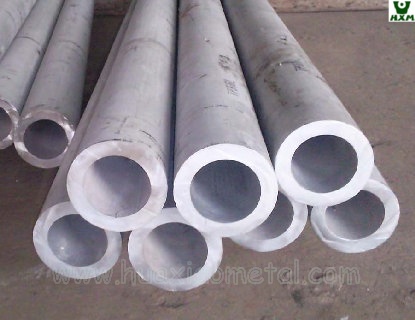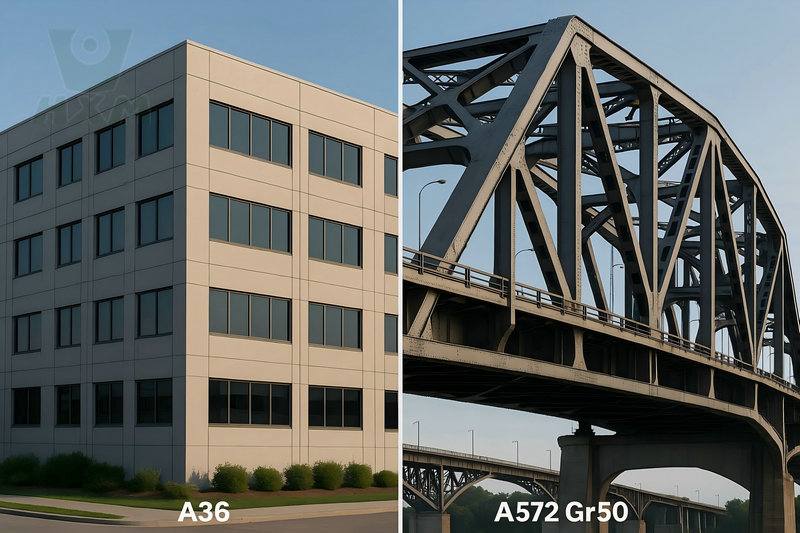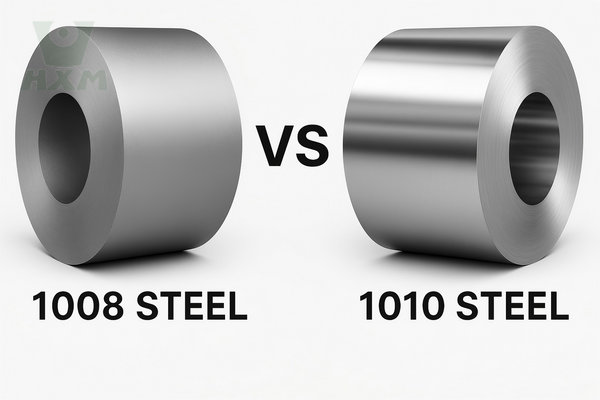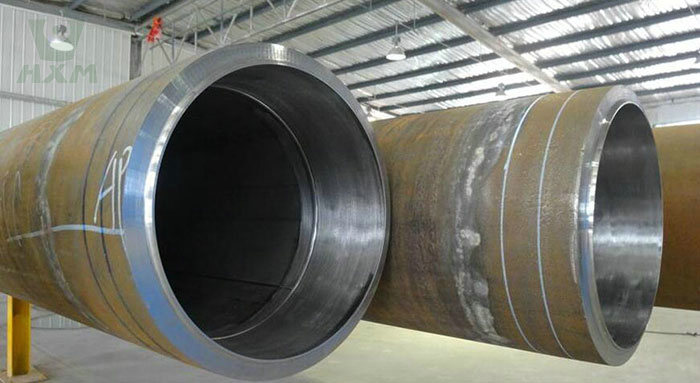The structure of large-diameter thick-walled pipe and its chemical activity
It can be known from modern atomic structure theory that due to the small number of outermost electrons (1e, 2e, 3e) of large-diameter thick-walled pipe atoms, and with the increase of atomic radius, these outermost electrons are easily lost. When the electrons fall off the atoms of the large-diameter thick wall steel pipe, the large-diameter thick-walled steel pipe atoms become large-diameter thick-walled steel pipe cations, and when the electrons are combined with the large-diameter thick-walled steel pipe cations, they become neutral and large. Diameter thick-walled steel pipe atom.

The results of X-ray research on the structure of large-diameter thick-walled steel pipes have confirmed that all large-diameter thick wall steel pipes have a crystal structure, and the large-diameter thick-walled steel pipe atoms and large diameters are arranged on the lattice nodes of the large-diameter thick-walled steel pipe crystals. Diameter thick-walled steel pipe cation. Between these atoms and ions, there are electrons that fall off the atoms.
These electrons are not fixed near the node of a large-diameter thick-walled steel pipe lattice but are constantly free to move between the whole lattices. called free electrons. Due to the movement of free electrons, large-diameter thick-walled steel pipe bonds are generated. With the help of large-diameter thick wall steel pipe bonds, large-diameter thick-walled steel pipe atoms and cations are closely linked together to form large-diameter thick-walled steel pipe crystals.
Due to the above-mentioned structural characteristics inside the large-diameter thick-walled steel pipe, especially the existence and movement of free electrons, the large-diameter thick-walled steel pipe has some common properties. Such as electrical conductivity, heat transfer, ductility, and so on. In terms of chemical properties, the atoms of large-diameter thick-walled steel pipes very easy to lose their valence electrons and become cations. Therefore, large-diameter thick wall steel pipes are reducing agents. The easier the large-diameter thick-walled steel pipe loses electrons, the more active its chemical properties are.
For example, if we put a small piece of zinc in any lead salt solution, we can see that the zinc begins to dissolve and the lead comes out of the solution. E.g:
Zri+ Pb(N03)2= Pb+Zn(N03)2
Written as an ionic equation:
Zn+ Pb++=Pb+Zn++
Obviously, this is a typical oxidation-reduction reaction. The essence of the reaction is that the zinc atoms donate their outermost electrons to the Pb++ ions, which themselves become Zn++ ions into the solution; while the Pb++ ions combine with the electrons to become a large-diameter thick-walled steel pipe and lead to precipitate out of the solution. If you do the opposite experiment, that is, put a small piece of lead in the zinc salt solution, nothing happens. This means that zinc atoms lose electrons more easily than lead atoms, while zinc ions are more difficult to bind electrons than lead ions. That is to say, zinc is more active than lead.
If the same method is used to compare the reactivity of lead and copper, it is found that lead is more active than copper, that is, lead can replace steel from its salt solution, but copper cannot replace lead from its salt solution.
It can be seen that among the above three large-diameter thick-walled steel pipes—zinc, lead, and copper, zinc is the most active and most likely to lose electrons, followed by lead, and copper is the least active. According to the above experiments, the ability of large-diameter thick-walled steel pipes to replace each other in the solution can be determined, that is, the activity of large-diameter thick-walled steel pipes, and they are arranged in the following famous sequence table:
Activity sequence table of large-diameter thick-walled steel pipe
K,Na,Ba,Ca,Mg,Al,Mn,Zn,Cr,Fe,Ni,Sn,Pb,H,Cu,Hg,Ag,Pt,Au
The ability of large-diameter thick-walled steel pipes to lose electrons in solution (the activity and reducibility of large-diameter thick-walled steel pipes) gradually weakens
From this sequence table, we can summarize the following points about the chemical properties of large-diameter thick-walled steel pipes:
- In the active sequence table of large-diameter thick-walled steel pipes, each large-diameter thick-walled steel pipe (including hydrogen) can replace the large-diameter thick-walled steel pipe behind it from its salt solution:
- The large-diameter thick-walled pipe located in front of the hydrogen can displace the hydrogen from the dilute acid, while the large-diameter thick-walled pipe located behind the hydrogen cannot.
- In the sequence table, the more active the large-diameter thick-walled steel pipe is, the easier its atoms are to lose electrons, and the more difficult its ions are to combine with electrons and be reduced to large-diameter thick-walled steel pipes.







